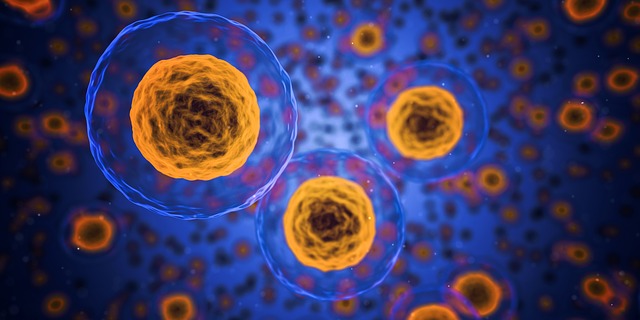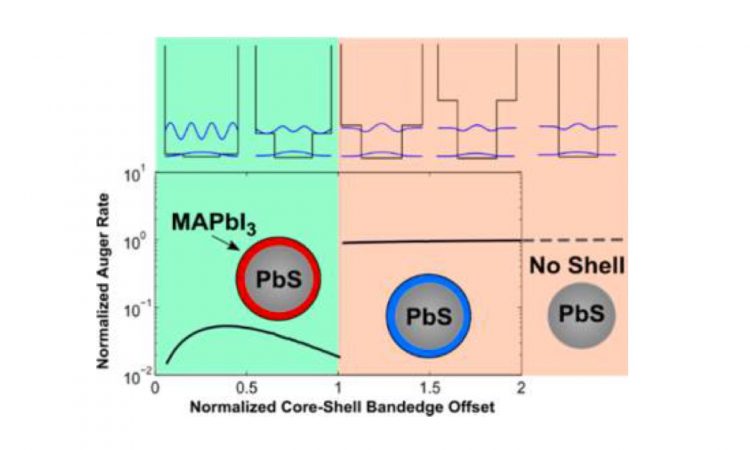The smaller the robot, the harder it is to carry a fuel source around. That’s where these metal-air scavengers come in. Powered by oxidizing a metal surface, they could be a useful power source for the tiny robots of the future.
Mapping Impurities in 2D Nanosheets to Improve Catalysis
Nanoscale materials are highly promising for efficiently catalyzing chemical reactions, but figuring out where impurities are in these tiny materials is often challenging. New research applies atom probe tomography to map impurities in 2D nanosheets.
Zapping Infections Before They Start With Self-Heating Graphene Filters
Hospitals are supposed to be havens for sick people, but they can also be breeding grounds for dangerous bacteria. A new kind of air filter for hospital HVAC systems can both remove and destroy bacteria for the air, helping prevent infections before they can start.
Are Nanoparticles Getting Into Your Cells?
Scientists want to use nanoparticles to deliver drugs straight to where they’re needed in your body – but can the nanoparticles enter the right cells? A new model describes how to design nanoparticles that get to where they’re needed.
A View With A Future: Perovskites in Solar Windows
Sure, solar panels can be installed on your roof, but that might not provide enough power – and no one wants to cover their garden with solar panels. That’s why researchers are studying new perovskite/organic materials for solar windows.
Scientists Are Now Shooting Lasers at Historic Art
What do lasers and the Mona Lisa have in common? Well, it turns out scientists can use lasers to help save old paintings from degrading, preserving our masterpieces for future generations. Pump-probe microscopy is one such technique.
What’s In A Screen? Improving Charge Transfer in Quantum Dot Films
What’s in a screen? It might be tiny particles called quantum dots – a novel material for everything from screens to solar cells. But how do researchers optimize new materials like quantum dot films? One type of spectroscopy – called transient absorption – could help.
From Sunscreen to Solar Cells: What’s Happening on TiO2‘s Surface?
The controversy over TiO2’s hydrophilic/hydrophobic transition has been examined in new detail – with researchers concluding that atmospheric molecules can attach onto TiO2’s surface, changing its chemical properties.
Deep Neural Networks Are Identifying the Next Generation of Materials
Machine learning? Deep neural networks? Find out how advances in artificial intelligence could help scientists discover new materials.
Photocages: Using Light to Deliver Medicine
What will medicine look like 10 years from now? Well, your doctor might be shining a light on you to help target drug delivery in your body. Read more about drug delivery using molecules called photocages inside!
Mood Lighting: Colorful Coatings for Smart Windows
Feeling blue? The chemistry of new “smart windows” could help – with a coating that adjusts to the outside temperature and a color filter that you can switch at will, they could be the perfect mood lighting for your energy-efficient home.
Freedom from Wires: Solar-Charging Perovskite Batteries
Ever had your phone die out of nowhere? Wonder how you’re going to charge your Tesla on your next road trip? Researchers from the University of Cambridge have got your back – they’ve developed a single material that doubles as a battery and a solar cell.
Nanoparticles and Mirrors: A “Bright” Future for Nanocrystal Blinking
You probably look in a mirror every morning: fix your hair, maybe even take a selfie. But the idea of using mirrors to look at molecules – that just sounds crazy, right? Maybe not – but you’ll have to read this Chembite to find out!
Quantum Dot Lasers: Improving Efficiency with Perovskite Shells
Lasers are cool – everyone who’s seen a sci-fi movie knows that. But we still haven’t figured out how to use them to their full potential in real life. This paper explores some ways to improve the efficiency of quantum dot lasers, which have a myriad of applications in computers to cell imaging.
Versatile Surfaces: How to Enhance the Role of Quantum Dots in Photocatalysis
There are lots of ways to use sunlight to achieve sustainable energy goals. Photocatalysts, which can use sunlight to power useful chemical reactions, are of great interest for the production of solar fuels like hydrogen. Read more about how we can use novel nanomaterials as photocatalysts in this Chembite!
Novel Materials for Next-Generation LEDs: Embedding Light-emitting Quantum Dots in a Perovskite Matrix
Light-emitting diodes (LEDs) already bring cheap and versatile lighting to people across the world, but the latest technological advances are even more promising, embedding nanocrystals in a perovskite matrix for better LEDs.
















